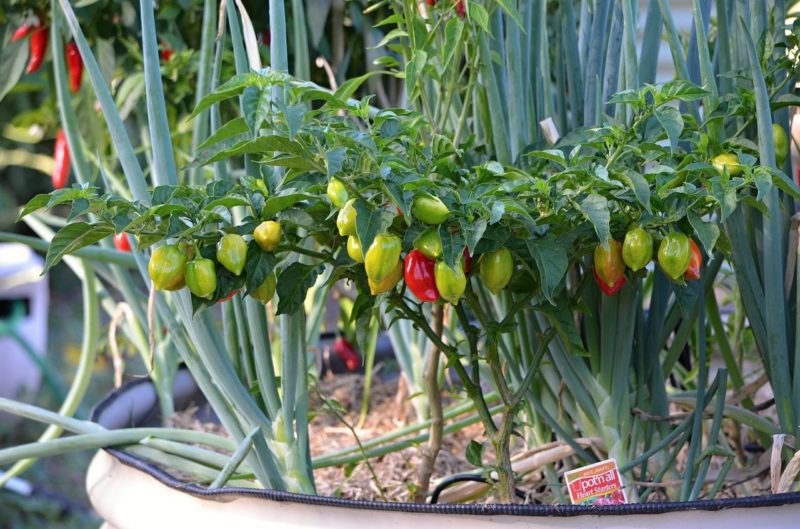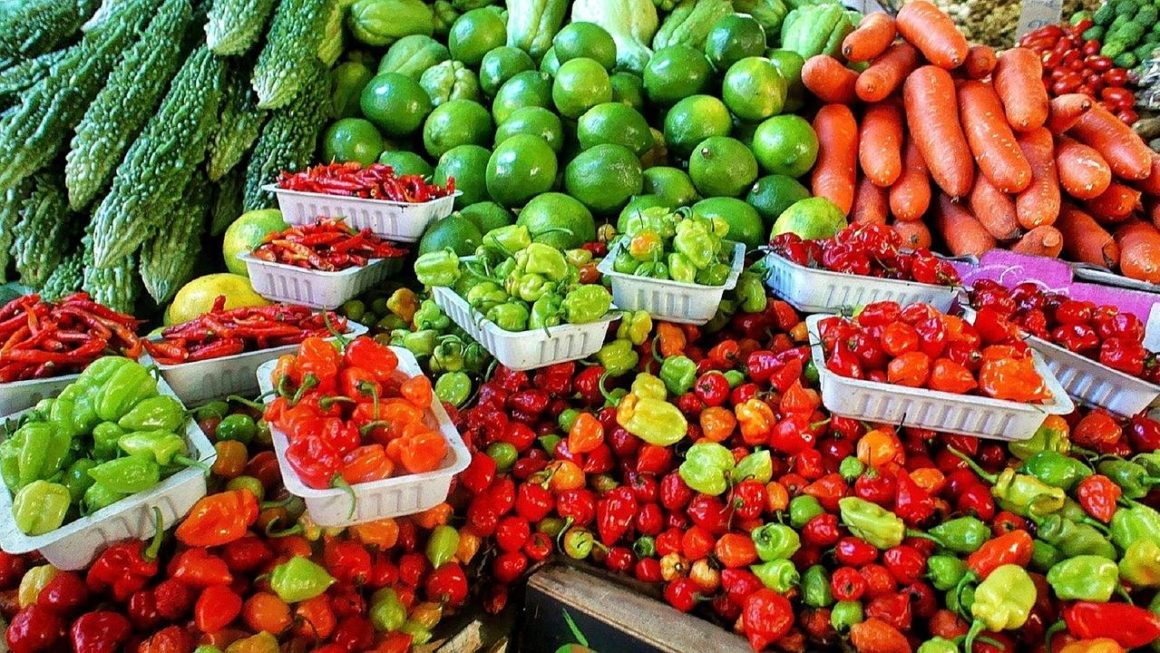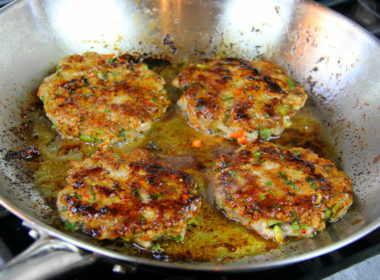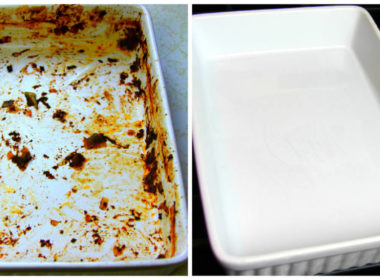How to Grow Scotch Bonnet And Other Hot Peppers In Temperate Climates.

If I had a dollar for every time I’ve been asked (email + FB + Twitter) how to grow Scotch Bonnet and other hot peppers, I’d be writing this from my villa in Bequia, overlooking the turquoise Caribbean sea. Unfortunately I’m still stuck in Canada where it can get insanely cold and the growing season is very short.
I use a LOT of insanely spicy peppers in many of my recipes and I’m quite successful at growing them during the short Canadian summers. So such requests does not come as a surprise. To be honest, I’d be worried if I didn’t get such emails as it would be an indication that people are not interested in my work.
While peppers such as Scotch Bonnet, Habanero, Trinidad Moruga Scorpion and Bhut Jolokia are native to more tropical type climates, with these tips you’ll be able to grow a bumper crop of scorching hot peppers even if you’re based in a zone 6+ as I am, in Canada.

- If you’re starting from seeds you’ll need to start a couple months in advance, so you’ll have seedlings in time to go into the garden when it’s frost safe.
- I much prefer to get plants from local nurseries as they tend to be stronger and better equipped to handle being outdoors
- If there’s still a risk of frost, cut 2 liter pop bottles at the base and use as individual shelters for the plants at night or cover with a plastic tarp
- PH is key! Employ the use of a soil test kit to determine the PH of the area you’ll be planting the pepper plants (even if you’re doing container gardening). You’re looking for something between 6.0 and 6.8 for optimal results. Adjust accordingly with ground limestone if it’s low and sulfur or peat moss to lower things.
- Well drained and aerated soil
- Add a four inch layer of compost to the soil and till well. I would recommend working the soil to about 8 inches deep to help with root growth and drainage.
- Plant in full sun (at least 6 hours per day)
- Make sure the soil is moist when you first add the seedlings and dig the holes as deep as the container they came in (and a couple inches wider). Plant about 3 feet apart.
- Place some colloidal phosphate and compost in each hole before the seedlings go in.
- DON’T over-water when you see blossoms. However being too dry can result in flower drop (keep moist)
- Feed with compost or fertilizer (organic?) during the growing season.
- Great companions plants are beets, garlic, onions, parsnips, radishes.
- Keep the area well maintained from weeds as to not have competition for nutrients from the earth. I would recommend mulching to keep weeds under control.
- MY MISTAKE! In the past I used a fertilizer (I do organic now) which was high in nitrogen. This creates leafy plants with little actual fruit.
Usually it take about 60-90 days from the time the plants go in before harvest sets in. I would recommend wearing gloves when you harvest, as such hot peppers contain organic chemicals called capsaicinoids which can burn the skin and eyes. And be sure to wash your hands with soap and water immediately after handling them.
Looking for recipes to preserve your harvest? Check CaribbeanPot.com for numerous fiery sauces and condiments.
Do you have any tips on growing Scotch Bonnet, Habanero, Trinidad Moruga Scorpion, Bhut Jolokia and other hot peppers? Please leave a comment below as I’d love to hear from you.




Greetings Chris
I live in N.California and scotch bonnets, scorpion, etc do not exist here. Bewilders me why but I work for one of the largest produce stores on the peninsula and our buyer has never been able to find them.
I am thinking of ordering seeds and just wondering if you think they will grow on my patio. But I can get a spot in the community garden. Any recommendations of where to order the seeds?
I’ve never planted from purchased seeds, so I don’t know any store to recommend. I do know though, when I start from seeds they take very long from germination to seedlings strong enough to plant. But I live in Canada and not blessed with that cali sunshine
Score! Made a deal with one of the farmers we buy from to grow them for me. So if they are to succeed or fail in Cali, at least they were at the hands of a professional:) But a scotch bonnet is not a habanero and wanted to know if there is a vastly different flavor profile other than HEAT between the two! I’ve been using the habanero for my Haitian recipes even though we have hotter peppers, it just kind of looks like a scotch bonnet. All the Caribbean restaurants from here to Oakland are serving up Jamaican. So been trying real hard to re create all those great dishes from Haitian chef’s always get in Florida.
Hello
any update growing the Scotch bonnet pepper ? Eager to know how it produced…
Thank you
check the youtube channel for the garden video
Hi Chris,
First of all, “Living the Irie Life”, I couldn’t resist the tagline. The ackee and saltfish recipe brought me here because that’s my #1 favourite dish of all time and I can never resist checking out someone else’s recipe. However, “evryting else a cyatch mi eye”. Great website.
We keep our scotch bonnet tree in a planter so it can come inside during the winter (I’m in Markham, ON). I find I don’t have to do too much to keep it going. Just water and lots of sun and it’s been very very generous to us this year. However, we got this tree from a family friend that sells them when they’re about 12″ tall.
Richter’s Herbs has Chocolate Scotch Bonnet pepper seeds that I’m eager to try. I’ll be using this article as my guide.
Keep those great articles coming!
Just moved to Lancaster, PA from south FL and found some scotch bonnet seedings (score!) which I planted in a raised bed mid-April. I was a little too eager to plant them outside already since the temperature is going down to 38 F tonite and after asking around it seems that I should have waited until mid-May to end of May before planting the annuals. Like you I’m also in Zone 6. However I am going to cover them with empty gallon size water bottles (I don’t drink pop) as you suggested and hope that they will survive the cold. Do you leave the bottle caps on?
Hello,
How did the crop come out ? Interested to know your results…
Thank you
Living the IRIE Life – Greetings from Jamaica, home of the Scotch Bonnet 🙂
Im in Oregon. I grew some of the hottest peppers aka ghost peppers and also the boring habanero lol. This year not so hot The ghost peppers and habaneros are so so , but the scoch bonnets is really small. Its pushing out peppers but its no where near the others why?
I must underline that, from my humble experience with a number of hot peppers, the scotch bonnet is the only one that has a delicious aroma. Even if one doesn’t like hot food, the fragrance emitted by the scotch bonnet when it is whole in the food , for instance in Haitian food cooked “à l’étouffée ” is enough to excite your appetite.
Florence
Just harvested a great crop of Scotch Bonnet. What do I do with the plant now? Prune it? It’s about 2 feet high.
My scotch bonnet pepper plant is tall and spindly. I grow it in a pot on my patio in South Florida.
It is about 10 feet tall, full of blossom (in December). How do I get the trunk to thicken (pinching the tops didn’t help).
Every branch has several blossoms, only a handful are turning into peppers.
hi tricia , i need a little help , isee u live no to far from , and i also have my scotch bonnet and habenero inside for winter , but i see the leafs fel off of one of them , but the tems are still green , what should i do now ? do u have your under light in winter or where do u keep it in winter , my window is a est side window .. BUT THERES A HEATER UNDER MY WINDOW , I DONT KNOW IF I SHOULD PUT MY HEATER LOWER , CAUSE IT LOOKS LIKE SOME LEAFS ARE DRIED AT BOTTOM
Accepting your comments are for a N.American audience, this is a WWW.
My comment is from a Mediterranean country in September.
Totally agree a lovely pepper, (Jerk sauces etc.)
If it helps anyone in these areas and climatic conditions, dry and ca. 30 C. I find it does not like direct sunlight and particularly do not water the leaves, only root watering.
Throwing down the seeds from a recipe that takes out the seeds, (wasting the aspects of it), gives a huge return.
do you know if you need more than one plant for pollination or will you still get peppers from just one plant?
I’ve planted about 8 scotch bonnet seeds and it has been 32 days and none of them has sprouted yet. I planted 5 ghost pepper seeds at the same time and 1 of them sprouted in 1 week. I have 2 others as well that’s growing right now as well. I am trying to figure out why my scotch bonnets aren’t coming out to play.